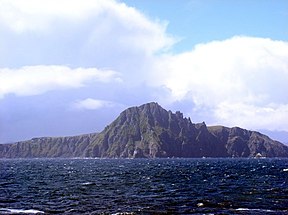Cape Horn Adventure Paradise at the End of the World
Geographical Location and Uniqueness of Cape Horn
Cape Horn Adventure Paradise at the End of the World – Cape Horn is located at the southern tip of the Hermite Islands, part of the Tierra del Fuego region, Chile. Geographically, this point is at coordinates around 55°58′ S and 67°16′ W, becoming one of the southernmost locations on the American continent before entering the open ocean towards Antarctica. As the meeting point between the Pacific and Atlantic Oceans, the waters around Cape Horn are known for their extreme weather conditions and fierce waves.
The uniqueness of Cape Horn lies not only in its position as one of the ends of the world, but also because of its long history as a shipping route. Before the opening of the Panama Canal in the early 20th century, Cape Horn was the main route for merchant ships connecting Europe with the west coast of America or Asia. However, these waters are often a major challenge for sailors because of strong winds, strong currents, and storms that can appear suddenly.
The environment around Cape Horn also has its own charm. Hornos Island, where this cape is located, is part of the Cabo de Hornos Biosphere Reserve which is protected by UNESCO. The area is home to a unique biodiversity, including seabirds, marine mammals and subantarctic vegetation. Despite its harsh climate, Cape Horn remains a favorite destination for travelers seeking a remote adventure experience.
The monument on Hornos Island is also an attraction for sailors and tourists. Built to commemorate the sailors who lost their lives in these rough waters, the monument is a symbol of human courage in the face of overwhelming natural challenges.
History of the Discovery of Cape Horn by Dutch Explorers
Cape Horn was first discovered by Dutch explorer Willem Schouten and his expedition partner Jacob Le Maire in 1616. They started their journey from the port of Hoorn in the Netherlands, which is where Cape Horn got its name. The main goal of the expedition was to find a new, safer and faster sea route to Asia, avoiding the traditional route controlled by the Portuguese.
Initially, European sailors had long avoided the waters around the southern tip of South America because they were known to be very dangerous. However, Schouten and Le Maire decided to explore this unknown territory. After months of sailing in challenging waters, they finally reached the furthest point on the southern tip of the American continent, which they later named Cape Horn, in honor of their hometown, Hoorn.
This discovery was very important for international trade. Before the Panama Canal was built, Cape Horn was a major route for ships transporting goods between the Atlantic and Pacific Oceans. Although the journey past the cape was fraught with dangers, including heavy storms and strong currents, many ships were forced to pass through because there were no quicker alternatives at the time.
In recognition of this discovery, Cape Horn eventually became one of the most recognizable landmarks in the history of navigation, as well as a symbol of courage and sea exploration in the 17th century.
Dangerous Waters: Challenges for Sailors Worldwide
The waters around Cape Horn are known as one of the most dangerous areas for sailors. Located at the southern tip of Chile, the meeting of the Atlantic and Pacific Oceans creates extremely rough sea conditions. Strong winds, large waves, and very strong currents often test the resilience of ships and the courage of sailors who sail there.
In addition, the weather in this area is also very unpredictable. Tropical storms and snow can appear quickly, rocking ships passing through. Many ships have been caught in heavy storms that can last for days, exacerbating the risk of accidents. Even in summer, very low temperatures and thick fog add to the difficulty of navigation.
Since the 17th century, when sailors began passing Cape Horn in search of new trade routes, these waters have claimed many lives. In those days, ships passing this cape had to prepare themselves for severe storms that could destroy ships in an instant. Many sailors were forced to wait in very difficult conditions, for months, to continue their journey.
Although advances in navigational technology and modern ships have reduced these challenges, Cape Horn remains a symbol of the courage of sailors facing the overwhelming force of nature. These treacherous waters remain a reminder of the immense challenges faced in exploring the world’s oceans.
Cape Horn Monument: A Tribute to the Lost Souls
On Hornos Island, near Cape Horn, stands a monument dedicated to the sailors who lost their lives in these dangerous waters. The monument honors the sacrifice and courage of those who faced extreme challenges in one of the most remote places on earth.
Since the discovery of Cape Horn in the early 17th century, many ships have been caught in the heavy storms and rough seas around the cape. The extremely dangerous waters have caused many sailors to lose their lives, making the area notorious for the high risks faced by seafarers. For centuries, Cape Horn has been a place of great courage, but also of great loss of life.
The monument consists of a large statue facing the sea, represented by a sailor standing upright as if facing the waves and strong winds. The monument is not only a reminder of the hardships of sea travel, but also a tribute to those who braved these rough waters in the name of world exploration and trade.
Amidst the harsh and untouched beauty of nature, this monument tells a long story of man’s struggle against the overwhelming forces of nature.




